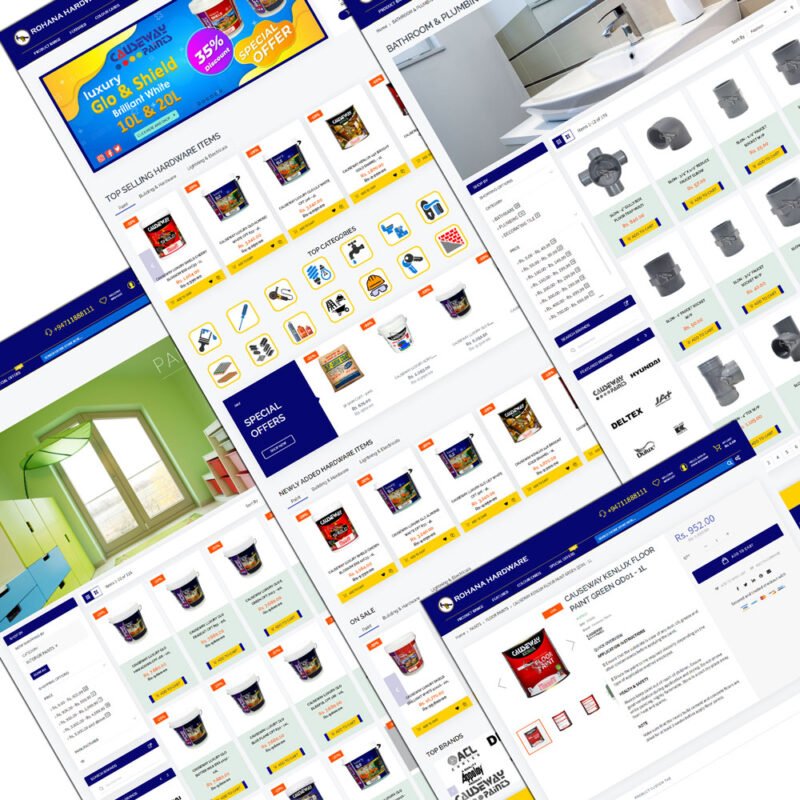What is GDPR – General Data Privacy Regulation and What it means for online businesses.
What is GDPR? GDPR is an extensive set of regulations that gives citizens who live in the European Economic Area (EEA) and Switzerland more control over how their personal data is collected and used online. GDPR introduces a lot of new rules and if you’re up for a little light reading, you can check out […]
Adobe to Marry Magento, A match made in heaven ? Our take on Adobe”s acquisition of Magento Commerce

Mark Lavelle, CEO, Magento Commerce announced that Adobe has announced their interest to buy Magento in a blog post. He wrote “I am excited to share some BIG news. Today, Adobe announced their intent to acquire Magento! This marks the next step in our journey to drive innovation across every facet of commerce.” TechCrunch, the popular tech […]
Commercial Bank Upgrades their Internet Payment Gateway to offer new functionality
Enhancements announced by the Commercial Bank of Ceylon to its Internet Payment Gateway provide new functionality for Small and Medium Enterprises (SMEs) to offer seamless and secure e-Commerce and m-Commerce solutions to their customers. The only Sri Lankan bank operating an Internet Payment Gateway hosted by MiGS (MasterCard Internet Gateway System), the Commercial Bank said […]
Download Free Version of Kaspersky Antivirus

Official announcement from Eugine Kaspersky himlself : “I’ve some fantastic, earth-shattering-saving news: we’re announcing the global launch of Kaspersky Free, which, as you may have guessed by the title, is completely free-of-charge! Oh my giveaway! https://kas.pr/eeg8” For securing websites and recovering hacked websites, please checkout our website recovery service page.
SECURITY BEST PRACTICES FOR WORDPRESS WEBSITES
WordPress securty best practices – 2019 Keep WordPress up-to-date (duh) When you login to the wordpress dashboard and see that “Update available” banner, click it and update your site. If you’re not sure about something breaking, make a backup before installing it. The important thing is that you do it, and with regularity. Information about […]
June 23rd – 25th Google Search Algorithm Update Seems Real
Lot of Search Engine Experts are claiming that Google has updated its Panda and Penguin algorithms between 23rd and 25th of June. Search Experts came to this conclusion after observing the SERP ( Search Engine Ranking Position) variation of my websites. Althout its too early to find what exactly has changed in the algorithm, many […]
Google Plans to Replace Google Site Search with Custom Search Engine ( CSE )
Google plans to discontinue Google Site Search, a product it has sold to web publishers that wanted to apply the industry’s leading search technology to their own sites. CSE Sign up for the basics is free, but should you need to remove Google branding and adverts , then it starts from USD 100 a year! […]
Joomla 3.7 is released with a ton of new features including custom fields!
Joomla.org has released the latest version of Joomla! with a load of new features. Joomla Developers around the world will be excited to try out the uses of these new features and improved workflows Custom fields allows a joomla developer to show additional information with articles such as data from a database. Multiple types of […]

In Magento Admin Panel and navigate to System > Configuration Rss Config section set Enable RSS to ‘Enable’. In the Catalog section set required feeds to ‘Enable’. An experienced Magento Developer may know what needs to be activated. New Products. This RSS feed tracks new products added to the store catalog. Special Products. This RSS feed will […]
Why has WordPress taken a lions share of CMS market over others like Joomla and Drupal ?
WordPress is used to create 58% of most visited 1 million websites of the world! While Joomla and Drupal are great CMSes, its important to understand how wordpress got 58% of the most visited websites and improving. While it is apparent that the leading CMSes WordPress, Joomla and Drupal are matured, fully featured CMS systems […]
PT to PX Converter & Font Size Measurements : Convert PT to Pixels, EMS and Percentages
Web design and any computer aided design industry all over the world uses different units of measurements to specify the sizes of the elements on a webpage or screen. On this page , we have a PT to PX converter and a PX to PT converter. we try to provide a comprehensive set of tools […]
Recursively applying proper directory permissions for your live Joomla website

Applying proper directory permissions for your live Joomla websites is one important step in securing it from malicious users online. Use below commands to recursively set permissions to files and directories. Joomla recommends 707 special permissions for the /images and /images/stories directories. find . -type f -exec chmod 644 {} \; find . -type d […]
Inserting an Iframe to Joomla article using JCE editor
Have you tried to embed the an iframe in an article using the JCE editor in Joomla ? You may have been frustrated to see your iframe code stripped off when the articles is finally saved. Most of the time iframe is the easiest way to include external content in an webpage such as videos, […]
How to stop Google indexing your site when it is under construction or maintenance

When you are creating a new website with Joomla or with any other method on a live server, Google might index the half-done pages and give you crappy search results for some time. Best thing is to block google from visiting the site using the good old robots.txt change the content of the robots.txt in […]
Dashed and dotted lines with just one click in Photoshop CS6
Photoshop CS6 has some cool features which are top requests from any designer in the world. Such one is the ability to create dashed and dotted lines very quickly. In this video Adobe Product Manager, Zorana Gee, gives a hint at what’s to come – creating dashed and dotted lines with just one click in Photoshop. […]
How to enable or disable JavaScript support in web browsers
This applies to following browsers: FireFox / Chrome / Internet explorer / Safari / Opera To enable JavaScript in Firefox 2.xx or 3.xx series Open Firefox. On the Tools menu, click Options. Click on the Content icon. Check the box next to Enable JavaScript. Click the Advanced button to open the Advanced JavaScript Options box. Check the boxes under Allow scripts to section […]
Are All Search Engines the Same?
A web search engine or Internet search engine is a software system that is designed to carry out web search, which means to search the World Wide Web in a systematic way for particular information specified in a textual web search query. – Wikipedia Search engines work by crawling hundreds of billions of pages using […]
eCommerce mistakes you want to avoid when creating your online business website
Building a business based on an eCommerce website is aways a challenge, so it is important to get basic things corrent first time to succeed in the ever competitive online market. Check if you have covered below points with your ecommerce website development. 1. No proper marketing Plan You can build the best website of […]
The CSS font shorthand rule
When styling fonts with CSS you may be doing this: font-weight: bold; font-style: italic; font-variant: small-caps; font-size: 1em; line-height: 1.5em; font-family: verdana,sans-serif And thats a lot of code to type and the CSS file gets big with if you have a lot of font rules! There’s no need though as you can use this CSS […]
Magento : How to replace the default logo in transactional emails
Here is a screenshot of the magento admin panel. Navigate through menu > System > Configuration> Design > Transactional Emails. Select and upload the logo , then set the ALT text. and save. Alt text is important as most email clients block images in email s by default.




